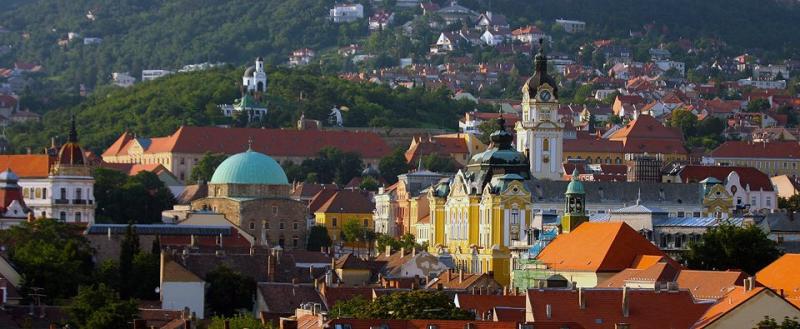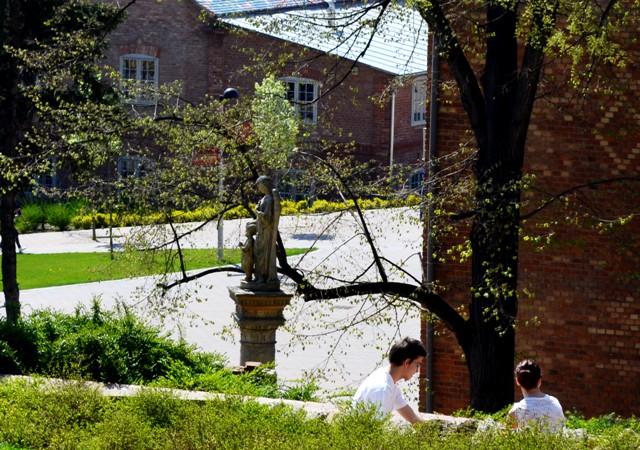< Back to the main page of Student Life

Meandering lanes, fig trees reviving The Arabian Nights, the mysterious Early Christian Necropolis, church towers popping up above the roofs, jamis and a minaret remained from the age when the Ottoman empire ruled Hungary, the synagogue in Fürdő street.
Pécs is a two-thousand-year-old town, the fifth most populated one in Hungary, where roads and cultures cross each other. The town attracts visitors by its Mediterranean climate, its gastronomy keeping multinational traditions alive and the light white wines and noble red wines of the country. Beside the variety of the built environment, opportunities of leisure-time activities are offered by the forests of the Mecsek Hills full of myths as well as by lakes in the country providing fishing and bathing opportunities for those who love the water.
Squares and streets are filled with life by guests sitting at the terraces of restaurants and cafés as well as by the annually held large-scale cultural and gastronomic festivals. Theatres, cinemas and museums continuously offer entertainment opportunities.
The town was founded by the Romans in the beginning of the 2nd century. In the 4th century, Sopianae was a flourishing provincial seat and one of the major centres of early Christianity. In 1009, Saint Stephen, the first king of Hungary established a diocese in Pécs, then in 1367, the first university of Hungary opened its doors in the town.
Architectural monuments of the 150 years of Turkish occupation, that is, the jamis, the Turkish bath and Idris Baba’s turban-stone tomb are still visitable. The town is hallmarked by nationwide and worldwide famous manufactures established in the age of embourgeoisement and industrialization. It is enough to mention such names as Vilmos Zsolnay (ceramist) or József Angster (organ constructor).
Several renowned artists found home in Pécs in the 20th century. Among others, such artists lived there as Victor Vasarely, the master of op art, Ferenc Martyn, sculptor and Marcel Breuer, an architect of the Bauhaus style. After the Second World War, industry took over the leading role in the town’s life: the traditional glove-making trade of Pécs and black coal and uranium mining were foundations of the Hungarian industry founding as well the town’s high standard of living.
After the difficulties following the political system change, the life in Pécs revived and began to flourish in 2010 when the town was awarded the title of the European Capital of Culture. The infrastructural and cultural investments advanced Pécs an attractive European town for both inhabitants and visitors. The most modern library of Hungary, the Centre for Learning and the Concert Hall of the Kodály Centre giving residence to the Pannon Philharmonic Orchestra has been finished. University students’ popular meeting places, that is, the Széchenyi square and the Kossuth square were renewed. Places in the town centre freed from vehicles were occupied by street musicians, showmen and terraces full of young people.

